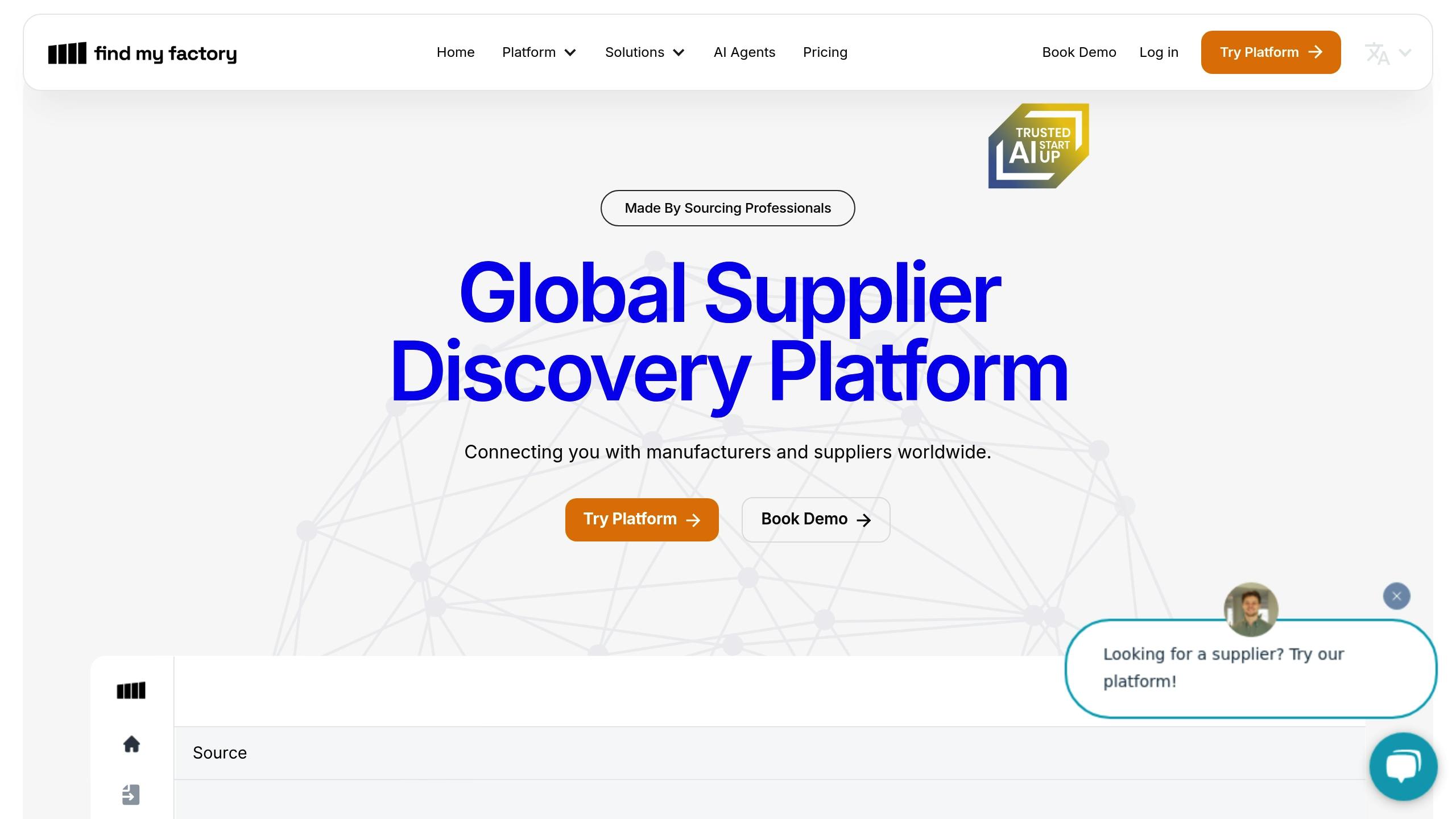Main Pages
AboutPricingSecurityCareerCustomersContactBlogFeatures
Monitor & EnrichDiscover & SourceRFI & EngageOur Socials
LinkedinLegal
Terms of UseMay 9, 2025
Explore how predictive analytics enhances supplier risk management by anticipating issues and improving decision-making in supply chains.
Articles

Predictive analytics is transforming how businesses manage supplier risks. By analyzing data and predicting potential issues, companies can prevent disruptions and make informed decisions. Here's what you need to know:
Quick Comparison:
AspectTraditional MethodsPredictive AnalyticsFocusPast performanceFuture risksData SourcesLimited, internal onlyReal-time, external includedResponse TimeReactiveProactiveRisk DetectionAfter issues occurEarly anticipation
Platforms like "Find My Factory" enhance predictive analytics with AI tools, real-time data integration, and collaboration features, helping businesses stay ahead of supplier risks.
Predictive analytics tools evaluate a variety of risk indicators to build detailed supplier risk profiles. Here's a breakdown of the main categories:
Risk CategoryKey IndicatorsData SourcesFinancial HealthCredit ratings, payment history, debt ratiosCredit bureaus, financial statementsOperational PerformanceProduction capacity, quality metrics, delivery timesERP systems, quality reportsGeographic RiskNatural disasters, political instability, regulatory changesWeather data, news feeds, government reportsMarket PositionMarket share, competitor actions, industry trendsMarket research, industry reportsCompliance StatusCertifications, regulatory violations, legal issuesRegulatory databases, compliance records
Creating accurate prediction models involves blending historical data with real-time updates. The process typically includes:
These models are the backbone of effective risk warning systems.
Modern predictive analytics platforms feature advanced alert systems that prioritize risks based on severity. These systems generally work on three levels:
Alert LevelTrigger ConditionsResponse ActionsEarly WarningMinor deviations from baseline metricsIncreased monitoring and supplier communicationMedium RiskMultiple risk indicators showing negative trendsRisk mitigation planning and alternative supplier assessmentHigh RiskCritical threshold breaches or immediate threatsEmergency response activation and supplier substitution
Key features of these systems include:
Predictive analytics takes risk management to the next level by shifting the focus from reacting to problems to preventing them. Instead of waiting for issues to arise, companies can now act ahead of time using statistical insights. This approach is especially useful in supplier risk management, where real-time monitoring of key risk indicators allows for timely actions.
Here’s what makes predictive analytics so effective:
Predictive analytics doesn’t just help with risk prevention - it also provides a clearer view of supply chain operations. By pulling together data from various sources, these tools give businesses a comprehensive understanding of their supply chain.
FeatureImpactBusiness AdvantageReal-Time MonitoringTracks metrics continuouslyQuicker responsesData IntegrationCombines performance insightsBetter decision-makingRisk VisualizationUses interactive dashboardsClearer communicationHistorical AnalysisTracks trends over timeSupports strategic planning
Spotting risks early can save businesses a lot of money by avoiding disruptions. Acting early means interventions can be both more affordable and more effective.
Predictive analytics also improves inventory management by forecasting supplier reliability. This reduces the chances of running out of stock or holding too much inventory, helping companies operate more efficiently while keeping their supply chain strong.
Inaccurate predictions often stem from poor data quality. To avoid this, it's crucial to establish strong processes for collecting and validating data. Focus on:
Addressing these technical issues is important, but having skilled teams to manage and interpret data is just as critical.
Predictive analytics requires a mix of technical know-how and business insight. Training your team in these areas can make a big difference:
Training AreaDescriptionOutcomeTechnical SkillsData analysis and modelingBetter model interpretationRisk AssessmentSupplier risk evaluationImproved risk detectionTool ProficiencyPlatform-specific trainingEfficient tool usageCollaborationCross-team communicationStronger team coordination
Tools like Find My Factory, with its intuitive interface and 24/7 support, make it easier for teams to adopt new systems. However, effective analytics also depend on how well these tools integrate with existing systems.
Introducing predictive analytics often leads to integration challenges. Ensuring smooth compatibility with existing tools is key. Strategies to address this include:
Find My Factory simplifies this process with features like:

Find My Factory uses an AI-driven platform to improve supplier risk assessment. Here’s a breakdown of its main features:
FeatureHow It Supports Risk ManagementAI-Enhanced SearchLets users explore over 8 million global suppliers through various search methodsData EnrichmentImproves supplier profiles for more precise risk evaluationsCollaboration ToolsFacilitates sharing of supplier assessments and team-based decision-making
These features form a solid foundation for managing supplier-related risks effectively.
Find My Factory builds on its features to refine risk analysis and simplify decision-making. Its Enrich module plays a key role by:
Additionally, the Source module provides five unique search methods, helping users evaluate risks before engaging with suppliers.
Find My Factory integrates with predictive analytics systems to provide real-time insights and improve collaboration. Here’s how it helps:
These tools make it easier to manage supplier risks while supporting informed, collaborative decisions.
Predictive analytics is changing how organizations handle supplier risk, offering a proactive approach to identifying and addressing potential challenges. When paired with platforms like Find My Factory, businesses can create a well-rounded risk management strategy that delivers measurable results.
Here’s how these tools work together to improve supplier risk management:
As supply chains grow more complex, combining predictive analytics with supplier management platforms becomes even more valuable. Companies using these integrated solutions are better prepared to handle future disruptions while keeping operations running smoothly.
To get the most out of predictive analytics, focus on the following:
Insights & Ideas